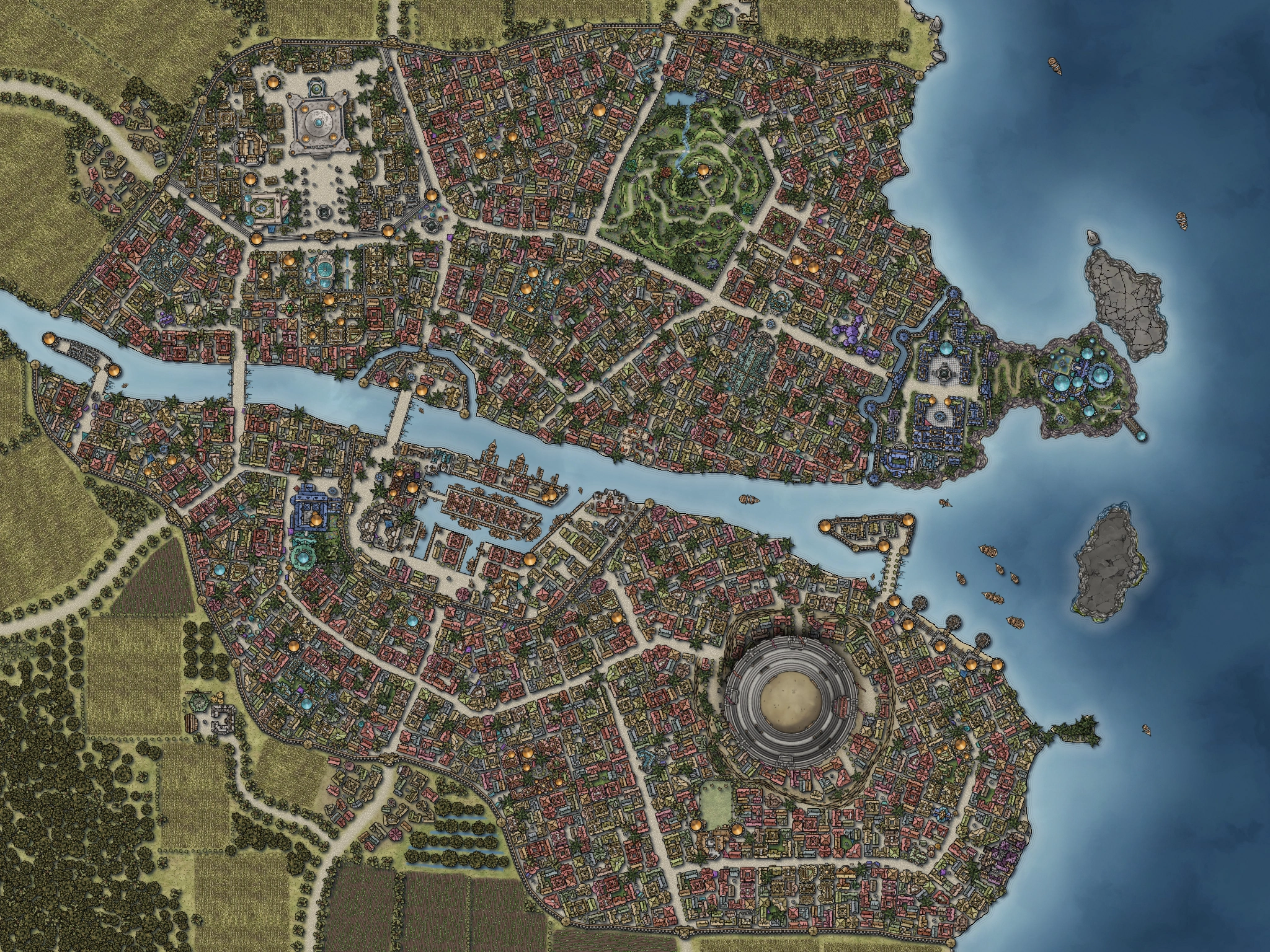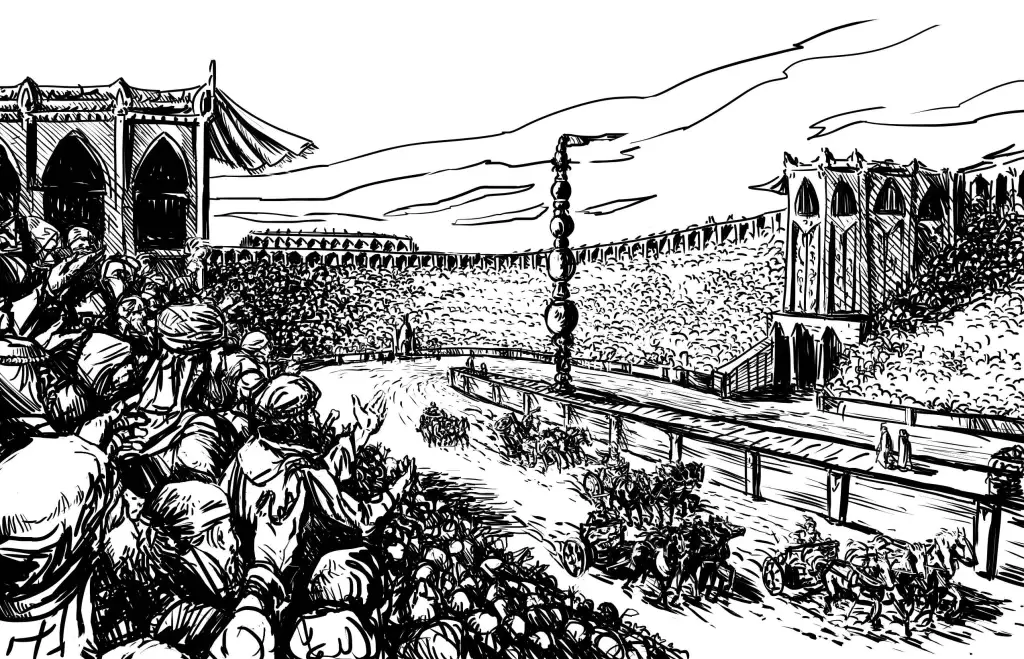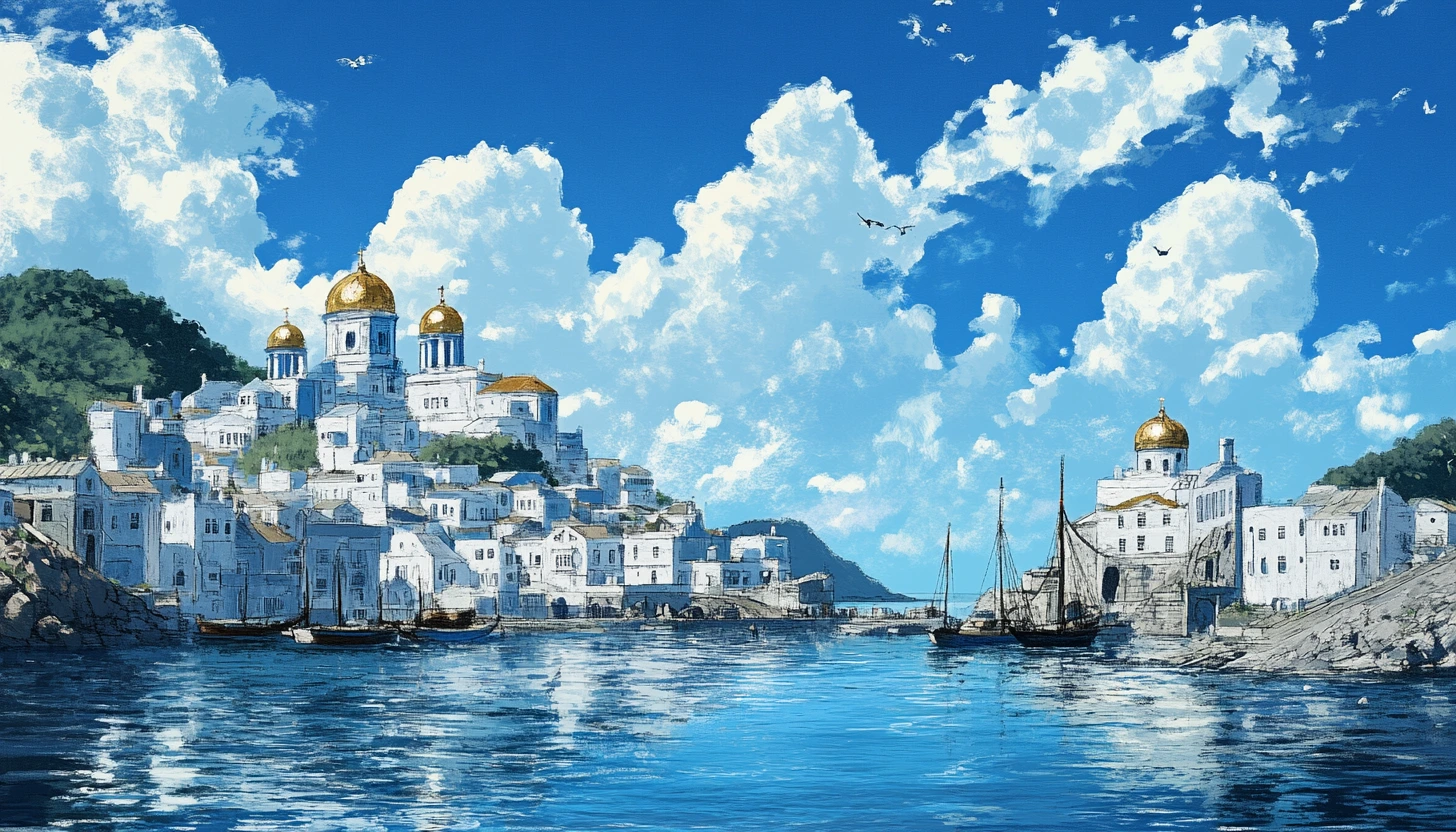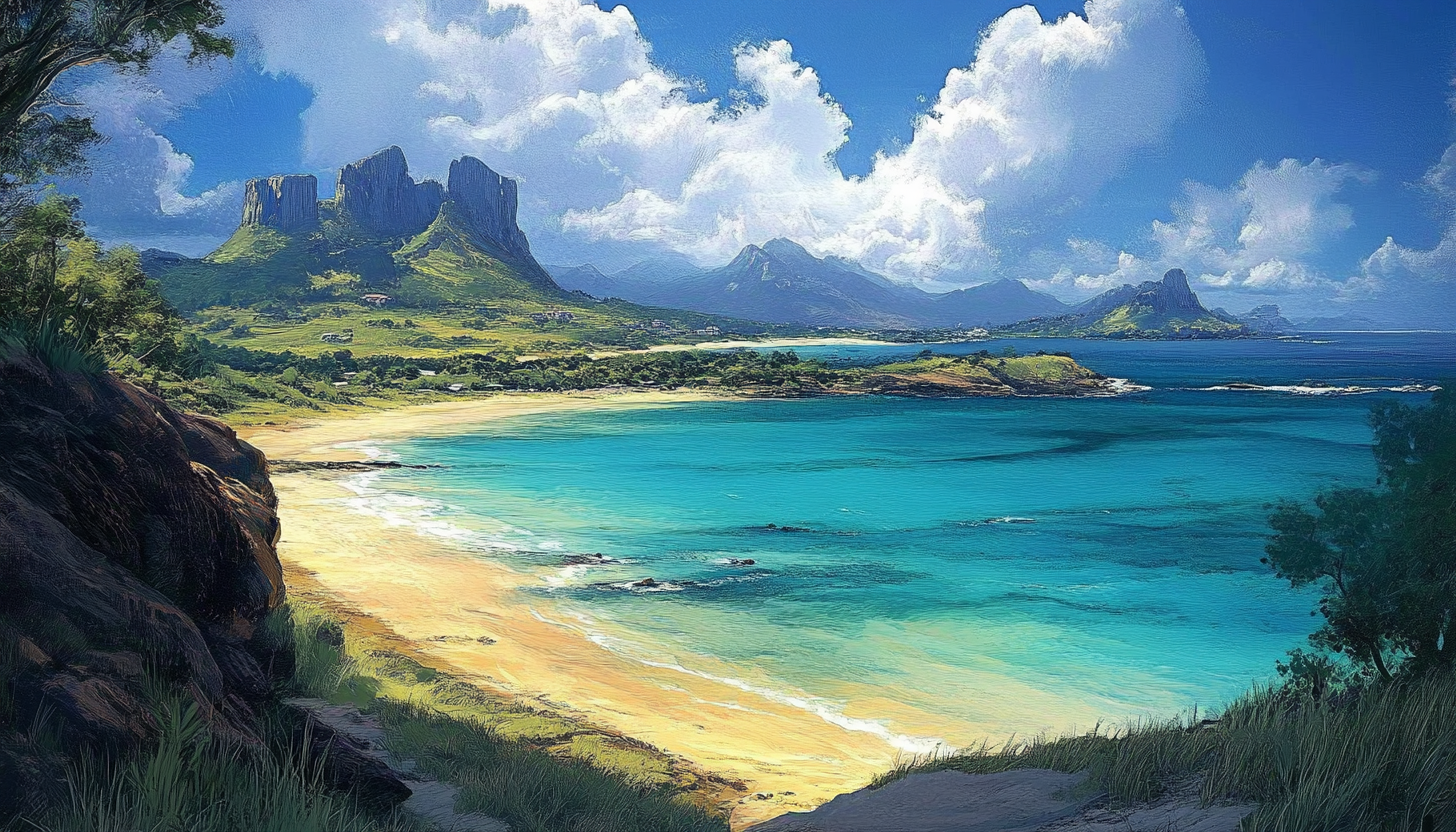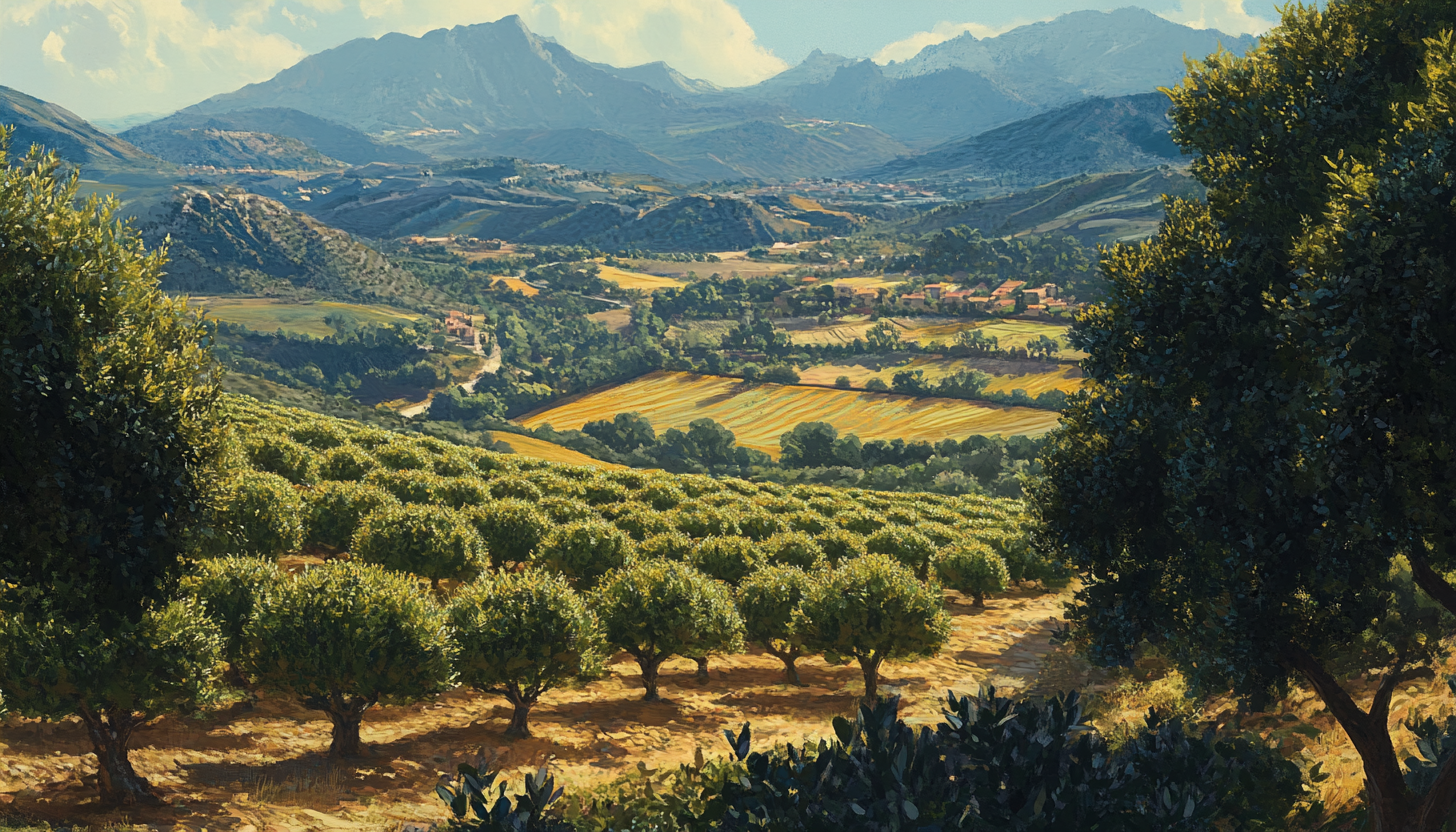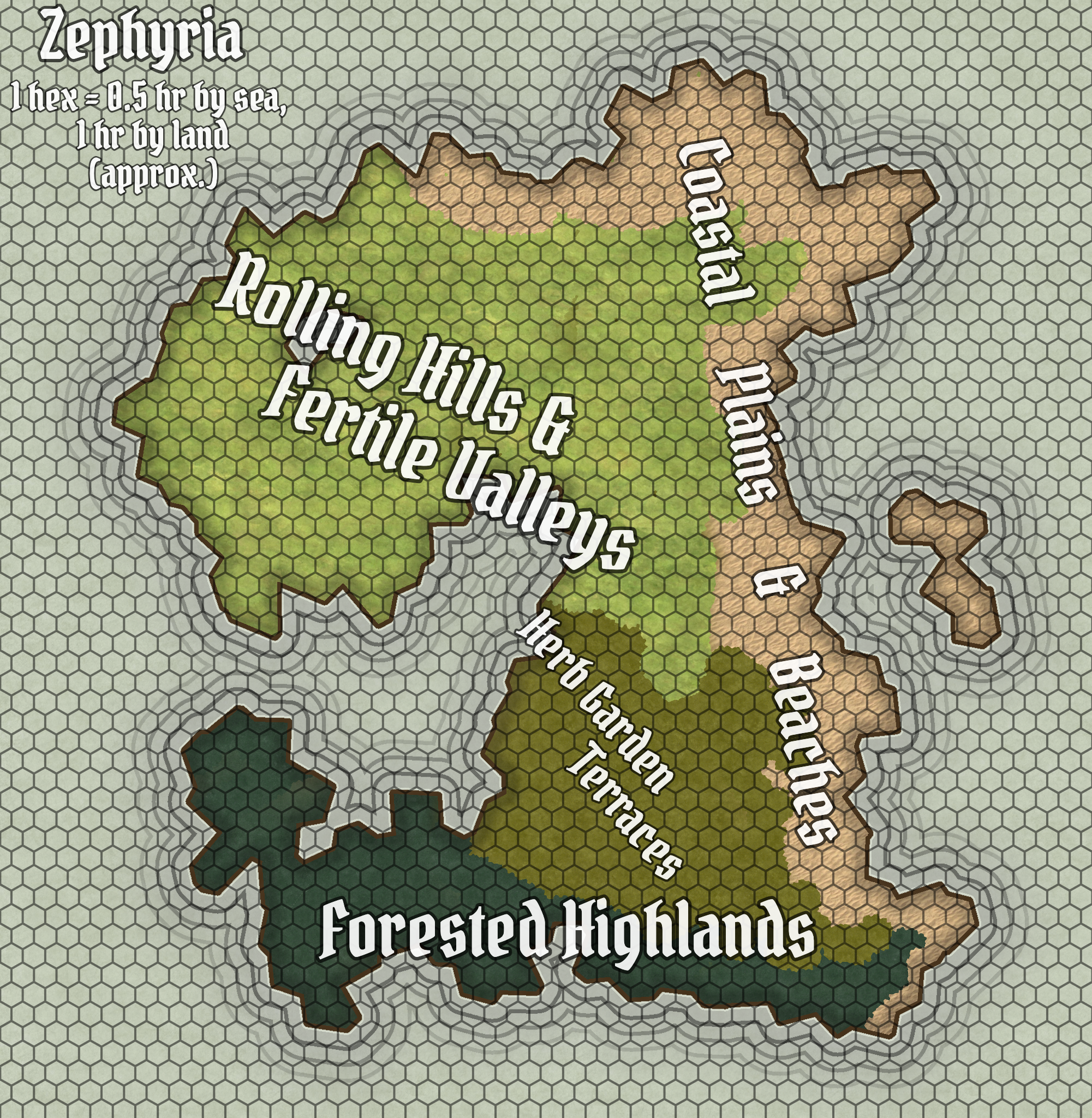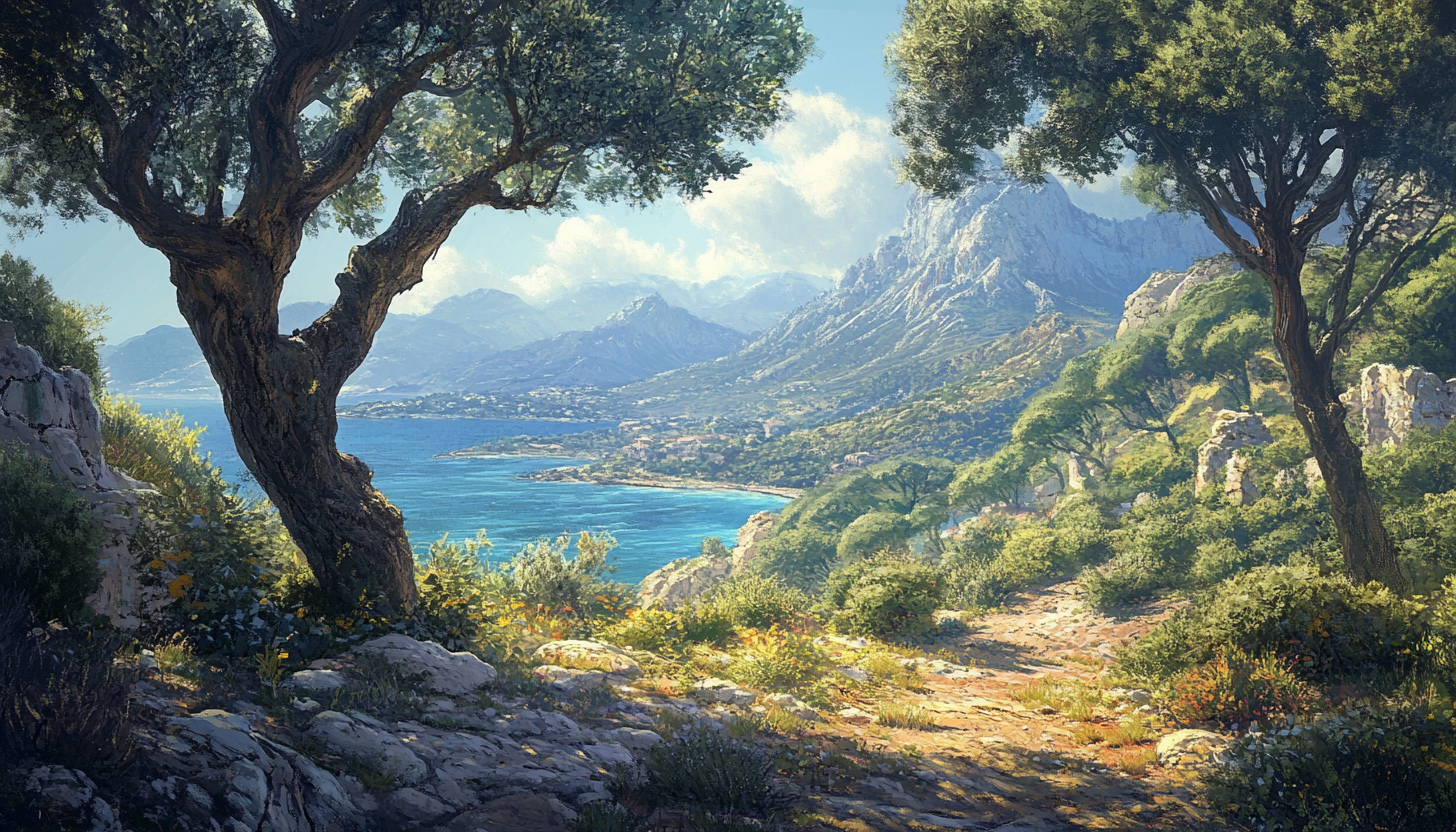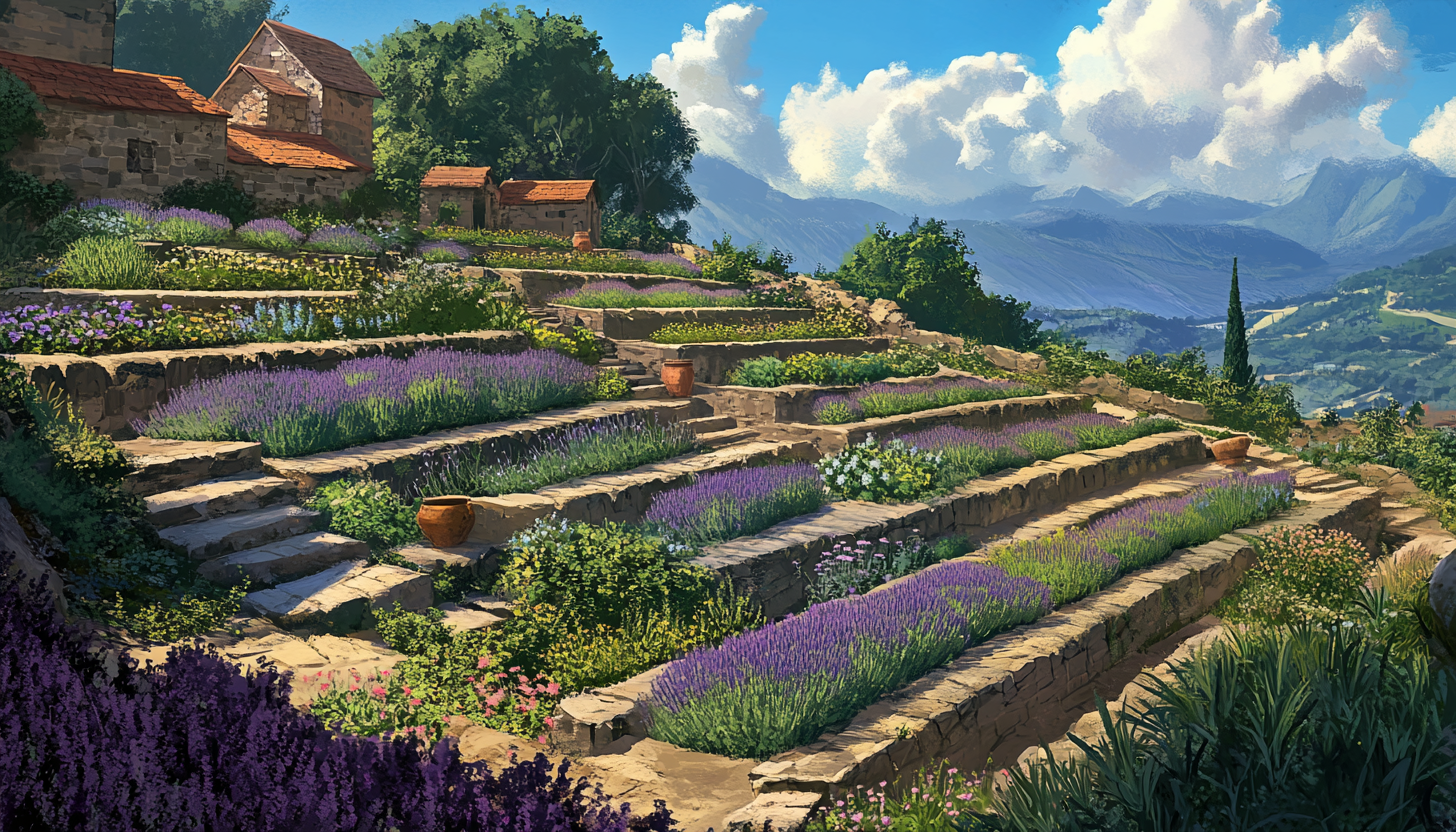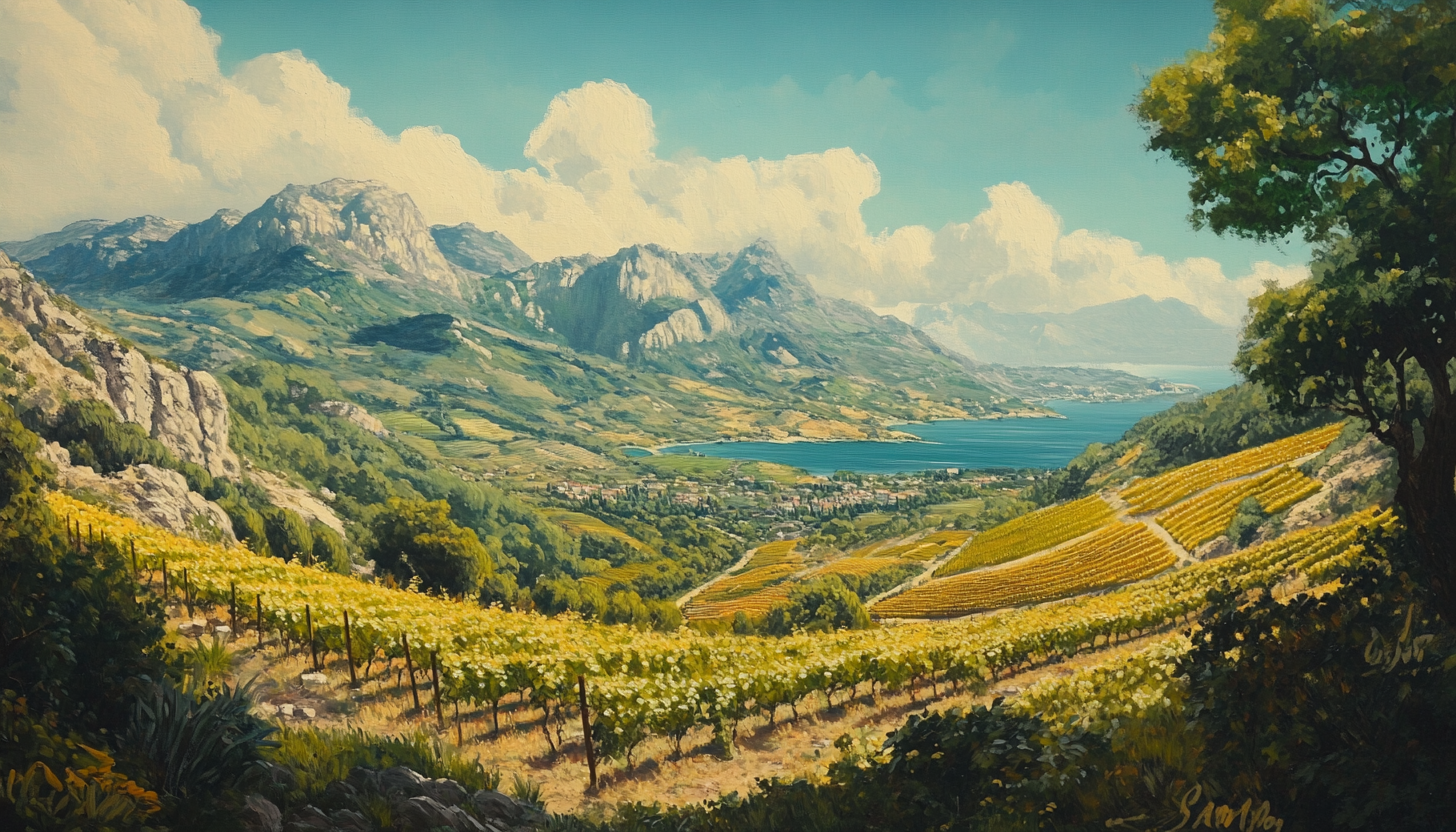Zephyria
Zephyria is the northernmost island in the Red Isles. It was predominantly colonized by Athezia. The island's rolling hills and fertile valleys are home to terraced vineyards, olive groves, and aromatic herb gardens, cultivating a rich agricultural tradition. Its bustling port city, Byrsa, facilitates trade, while the architecture reflects Athezian elegance and nautical influences. Zephyria invites travelers to indulge in sun-soaked leisure, explore its cultural tapestry, and experience the warm hospitality of its people.
Geography
Zephyria is an island distinguished by its varied terrain, which includes gently rolling hills, fertile valleys, coastal plains, and forested highlands. Each region contributes to the island’s agricultural, economic, and cultural identity within the Red Isles.
The central and western regions of Zephyria are characterized by softly undulating hills, whose sunlit slopes have been carefully terraced for viticulture. These vineyards not only maximize arable land but also prevent soil erosion, producing the island’s famous Zephyrian vintages—light, crisp wines celebrated throughout the region. The hilltops offer sweeping views of the coastline, where traditional windmills harness the coastal breezes to power small-scale grain mills.
Nestled between the hills, the island’s low-lying valleys form the heart of Zephyria’s agriculture. The rich, loamy soil, sustained by seasonal rains, supports extensive olive groves, citrus orchards, and herb gardens. The olives grown here are prized for their robust flavor, with many groves remaining under family stewardship for generations. Citrus trees, particularly lemons and oranges, flourish in the valleys, their fragrant blossoms perfuming the air during harvest season. Additionally, aromatic herbs such as rosemary, thyme, and lavender are cultivated both for culinary use and traditional medicine. Scattered throughout the valleys are natural springs, which provide vital irrigation and are often regarded as sacred by local communities.
The northern and eastern coasts of Zephyria consist of narrow, flat plains that give way to picturesque beaches. Small fishing villages dot the shoreline, their economies centered around fishing and salt harvesting. The island’s beaches are renowned for their fine golden sands and clear turquoise waters. Along the north-central coast, dramatic cliffs rise from the sea, their trails leading to secluded coves and scenic vantage points.
In the southern hills, a series of terraces are dedicated to the cultivation of aromatic and medicinal plants. These slopes are adorned with vibrant rows of lavender, chamomile, and mint, creating a striking patchwork of color and fragrance. The herbs harvested here supply Zephyria’s esteemed apothecaries, whose remedies are highly sought after in neighboring regions.
Along the southwestern coast, a remnant of untouched woodland remains, standing as one of the island’s last preserved forests. This area is notable for its biodiversity, hosting rare plant species and fauna, including trees historically used in shipbuilding. Local legends suggest that these highlands may conceal remnants of the Builders.
Climate
Zephyria enjoys a mild Mediterranean-like climate with warm, dry summers and relatively cool, wet winters.
Spring brings bursts of wildflowers across the hills and valleys, while summer is harvest season for many crops. Autumn is dedicated to winemaking, and winter, though mild, is marked by rains that rejuvenate the soil for the next growing season.
Natural Resources
Zephyria’s fertile soil and mild climate make it a hub for agriculture, with the cultivation of Zephyrian grapes for its famed wines as a cornerstone of the economy. The island’s rolling hills yield crops like lavender and chamomile, while the forested highlands in the south provide timber for construction and shipbuilding. Small deposits of iron and copper are scattered throughout the interior, and the coastline offers an abundance of salt and fish, vital to the local diet and trade. Natural harbors and the wind power harnessed by its iconic windmills enhance the island’s maritime infrastructure. Though these resources sustain the population, much of Zephyria’s wealth is funneled under Athezian colonial rule, creating ongoing tensions with the original Islanders.
Zephyrian Grapes and Wines
Zephyrian grapes, known locally as Uvas de Zephyra, are small, sun-soaked fruits prized for their concentrated flavor and balanced sweetness. Grown on the terraced vineyards of the island’s rolling hills, these grapes thrive in the fertile soil and abundant sunlight, producing a fruit with a uniquely crisp and slightly floral profile. Harvested at peak ripeness, the grapes are processed using a distinctive method powered by the island’s iconic windmills. These windmills operate bellows that inflate large air bladders, creating a gentle yet efficient pressing system. This innovative technique preserves the delicate flavors of the grapes while maximizing juice extraction, resulting in Zephyria's signature light, slightly sweet wines. The Athezian colonial government enforces strict regulations to maintain the exceptional quality of both the Uvas de Zephyra and the wines they produce. These regulations ensure that every bottle meets exacting standards, solidifying Zephyrian wines as a luxury export. Variants range from pale gold whites to soft blush rosés, with rare dessert wines crafted from late-harvest grapes. The wines are celebrated across the Red Isles and beyond for their refreshing character, subtle notes of honey and citrus, and seamless pairing with seafood and cheeses. Despite colonial control, the wines remain a source of cultural pride and economic importance to the Islanders.
Type
Island
Location under
Included Locations
Owning Organization
Contested By



